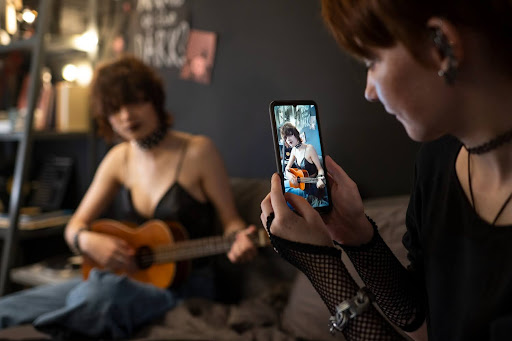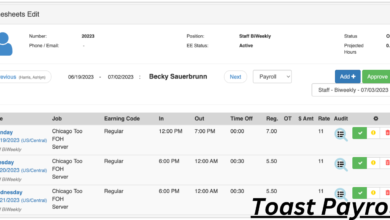The Importance of Branding for Musicians on Social Media

I. Introduction to Branding and Its Significance for Musicians
In the digital age, where music is more accessible than ever, branding has emerged as a crucial component for musicians seeking to carve out a distinct identity in a saturated market. Branding goes beyond just a catchy name or a memorable logo; it encompasses the entire perception that audiences have of an artist. This perception is influenced by the music they produce, their public persona, visual aesthetics, and the way they interact with fans and the broader community.
For musicians, strong branding is significant for several reasons. Firstly, it helps to establish a unique identity that sets them apart from the countless others vying for attention. With millions of artists sharing their work on platforms like Spotify, Apple Music, and various social media, a well-defined brand can capture the interest of listeners who might otherwise overlook their music. Branding creates a narrative around the artist, providing context and emotional resonance that can deepen the connection with their audience.
II. Understanding Brand Identity
Establishing a strong brand identity is crucial for musicians navigating the crowded landscape of social media. It serves as the foundation upon which all marketing efforts are built, allowing artists to carve out a distinct space for themselves. A well-defined brand identity not only communicates who you are as an artist but also resonates with your audience on a personal level.
A. Defining Your Unique Sound and Style
At the core of any musician’s brand identity is their unique sound and style. This encompasses not just the genre of music but also the emotions, messages, and experiences conveyed through their work. Musicians should take the time to reflect on what makes their music distinctive—be it innovative melodies, thought-provoking lyrics, or a particular performance style. Developing a strong brand identity also plays a key role in how to get more Spotify listeners, as a consistent and memorable image helps attract and retain a loyal audience.
By articulating these elements, artists can create a narrative that speaks to their audience and sets them apart from the competition. This narrative should be woven into all aspects of their branding, from promotional materials to social media content, ensuring consistency and authenticity.
B. Creating a Visual Identity: Logos and Artwork
Visual identity is another critical component of brand identity for musicians. This includes everything from logos and album artwork to social media graphics and merchandise designs. A well-crafted visual identity should encapsulate the essence of an artist’s music while being instantly recognizable. Musicians can work with graphic designers or use online tools to create logos that reflect their style and ethos.
C. Establishing a Consistent Online Presence
In today’s digital age, maintaining a consistent online presence is vital for sustaining brand identity. Musicians should develop a cohesive strategy for their social media profiles, website, and streaming platforms. This involves using the same color schemes, fonts, and imagery across all platforms to create a unified look. Regularly posting content that aligns with their brand—such as behind-the-scenes glimpses, music releases, and personal stories—can help keep audiences engaged and invested in the artist’s journey.
Consistency also extends to the tone of voice used in communication; whether it’s playful, serious, or inspirational, maintaining a uniform tone reinforces the artist’s brand identity and builds familiarity with their audience.
III. Engaging with Your Audience
Engaging with your audience is a crucial aspect of branding for musicians, especially in the digital age where social media plays a dominant role in how artists connect with their fans. Building a strong relationship with your audience not only fosters loyalty but also amplifies your brand’s reach and impact.
A. Utilizing Social Media Platforms Effectively
Social media platforms serve as powerful tools for musicians to engage with their audience. Each platform offers unique features that can be leveraged to showcase your music, share your story, and connect on a personal level. For instance, Instagram’s visual focus allows artists to share behind-the-scenes content, snippets of new songs, or even short live performances, creating an intimate glimpse into their artistic journey. Meanwhile, Twitter’s real-time nature is perfect for engaging in conversations, sharing thoughts, and reacting to current events, helping to humanize the artist and foster a sense of community.
Regularly posting content, utilizing hashtags, and participating in challenges can significantly enhance visibility and engagement.
B. Building a Community Around Your Brand
A successful brand goes beyond just music; it encompasses a community of fans who share a passion for what you represent. Building this community involves creating spaces where fans can interact with you and each other. This can be achieved through dedicated fan groups on Facebook, interactive livestreams on platforms like Instagram or Twitch, or even hosting virtual meet-and-greets.
Encouraging fan-generated content—such as covers, dance challenges, or artwork inspired by your music—can also strengthen this community. When fans feel valued and part of your journey, they are more likely to advocate for your music and share it with others, further expanding your reach.
C. Responding to Feedback and Interacting with Fans
Engagement is a two-way street; it’s essential to not only share your content but also to listen and respond to your audience. Acknowledging feedback, whether positive or constructive, shows that you value your fans’ opinions. This could involve replying to comments on social media, addressing fan questions during Q&A sessions, or even incorporating fan suggestions into your music or merchandise.
Interacting with fans helps to create a personal connection that can differentiate you from other artists. Simple gestures like liking and sharing fan-created content or sending personalized messages can make a significant impact. By making your audience feel seen and heard, you nurture loyalty and foster an environment where fans are excited to support your brand.
IV. Measuring the Impact of Your Branding
Once a musician has established their brand and begun to cultivate an online presence, the next crucial step is measuring the impact of that branding. Understanding the effectiveness of branding efforts allows artists to make informed decisions, adjust strategies, and ultimately enhance their connection with their audience.
A. Analyzing Engagement Metrics and Growth
Engagement metrics serve as a critical barometer for assessing the success of a musician’s branding on social media. Key performance indicators (KPIs) such as likes, shares, comments, and follower growth provide insight into how well the audience resonates with the artist’s brand. By regularly monitoring these metrics, musicians can identify which content types elicit the most engagement and which branding elements are effective in attracting new fans.
For instance, a spike in engagement following a specific post or campaign may indicate that the visual identity or message aligns well with the audience’s preferences.
B. Adjusting Strategies Based on Data
Data-driven decision-making is essential in the ever-evolving landscape of social media. Musicians should not only evaluate their current engagement metrics but also analyze patterns and trends over time. For example, if a particular style of post—be it behind-the-scenes videos, personal stories, or promotional content—consistently performs well, artists can focus more on that format to amplify their branding efforts. Conversely, if certain content fails to generate interest, it may be worth reconsidering or rebranding that aspect to better align with the audience. Regularly revisiting and adjusting strategies based on data ensures that musicians remain relevant and maintain a strong connection with their followers.
C. The Role of Collaborations and Partnerships
Collaborations and partnerships can significantly enhance a musician’s brand visibility and credibility. By aligning with other artists, brands, or influencers who share similar values or target audiences, musicians can reach new fan bases and strengthen their branding. The impact of these collaborations can be measured through engagement metrics that arise from joint promotions or shared content.
For instance, the increase in followers or engagement during a collaboration can indicate the effectiveness of the partnership in enhancing brand awareness.
V. Conclusion: The Long-Term Benefits of Strong Branding for Musicians
In an increasingly competitive music landscape, the importance of strong branding cannot be overstated. For musicians, branding is not merely about crafting a catchy logo or a memorable tagline; it is about establishing a lasting identity that resonates with audiences and differentiates them from others in the industry. As we have explored throughout this article, effective branding encompasses a well-defined sound, a cohesive visual identity, and meaningful engagement with fans, all of which contribute to an artist’s overall image.
In conclusion, the importance of branding for musicians on social media cannot be underestimated. By investing time and effort into building a strong brand, musicians pave the way for sustained success, deeper connections with their audience, and a meaningful legacy in the music industry. As they continue to evolve and adapt, a solid brand will serve as their foundation, guiding them through the complexities of their artistic journey.
Keep an eye for more latest news & updates on Best Uk News!



